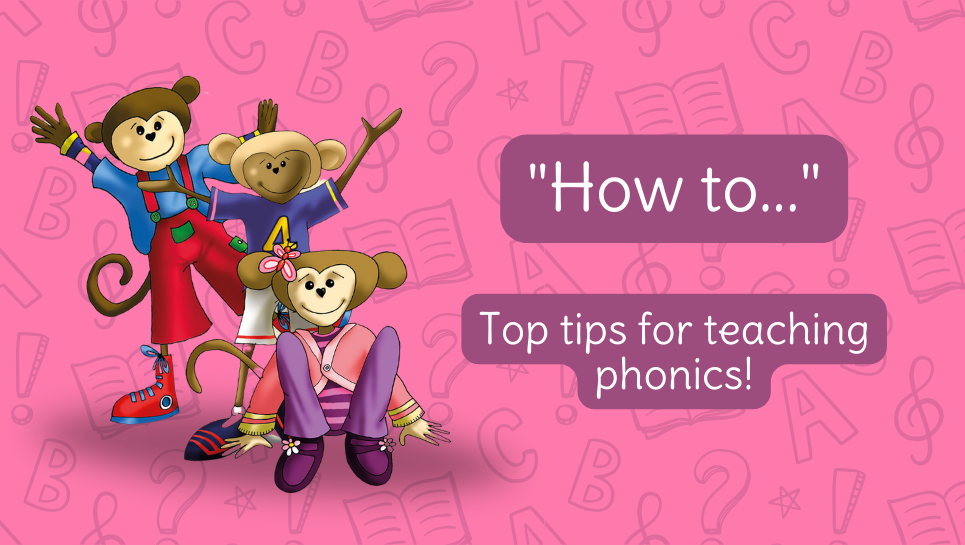In our ‘how to…’ series we are going to delve into all things phonics instruction and give you our expert advice on developing confident readers.
***
Blending sounds together takes place in working memory which is very limited and fleeting. Words with consonant blends can be problematic. The more sounds in the word, the harder it is for the student to hold onto them in working memory and blend them together. Children who can blend three-sound CVC words may stumble when blending words with consonant clusters because they have four or more sounds.
How can we help students read words with consonant blends?
Can the student say the word?
It is important to ensure that the student can hear and pronounce all the sounds in the word. For some children the difficulty in reading and spelling words with consonant blends is a result of not hearing or pronouncing all the sounds in the word. The teacher can model saying the word. Word-building is a great activity for clarifying the sequence of sounds in the word. See below.
Does that student have automatic letter/sound knowledge?
As blending sounds takes place in working memory, it is imperative to remove any delay in recall of letter sounds. Teachers should ensure that before asking children to blend sounds into words they know the letter sounds and can recall them at speed. If the student is trying to recall the letter sounds and hold onto them as they are trying to blend them, they will experience cognitive overload.
Teach ‘to blend’ and not ‘blends’
A common approach to teaching children how to read and spell words with consonant blends is to teach letter clusters as one unit. This approach will introduce common ‘initial blends’: br, cl, st, pl etc. and common ‘final blends’: mp, nd, st etc.
Difficulties with reading words with consonant blends are often a result of poor or limited working memory. The focus of teaching should be how to help children segment (separate) and blend (push together) these consonant sounds. By teaching children to memorise numerous combinations of consonant clusters we are adding unnecessary spelling patterns to an already complex alphabetic code.
It is more efficient to teach letters separately and not as a ‘blend’. For example, teach the letters ‘s’ ‘t’ ‘o’ and ‘p’ as separate graphemes (letters) that spell separate sounds and not as a word with an initial blend ‘st’. Teaching the sounds separately reflects the underlying principle of the English writing system – the Alphabetic Principle – that letters spell separate sounds in words (phonemes) and not clusters of sounds.
Teach word-building
Word-building is the most effective way to demonstrate to beginner readers the sequence of sounds in a word and how they relate to the letters that represent them. In this activity children must listen to the sounds in words and place the letters that represent them in the correct order. To do this they must segment the sounds in the word. Then they blend the sounds into the word. A good word-building lesson will also include spelling the new word so that the student can encode (spell) in writing what they have just decoded (read). To read more about word-building, check out a previous post.
Unstick adjacent consonants with word chains
Another effective activity for teaching consonant blends is word chains. In this activity the student must build a word and then take away, add, or swap a sound in the word. It requires the student to listen carefully and discriminate between similar sounding words. When asked to change the word ‘limp’ to ‘lip’ they need to hear that ‘lip’ does not have the sound /m/. The student also needs to locate where to remove that sound in the word. This activity helps to unstick consonant blends that get stuck together. It is best to do these activities with letters and not just orally, as research has shown that phonics and phonemic awareness grow in tandem. This makes sense as seeing, saying, and manipulating letters is more multisensory and consolidates letter/sound bonds and spelling patterns. To read more about word chains, have a look at this article.
Start with words that begin with continuant consonants
When students struggle with reading words with consonant blends it is helpful to start with words that begin with continuant consonants. These are consonants that can be ‘stretched’, e.g., the sounds /f/, /s/ or /l/. It is often harder for students to blend words that begin with ‘stop sounds’ such as /t/, /p/ or /k/. Example words that the teacher could start with are mend, lamp, wind, silk, flag and snip.


